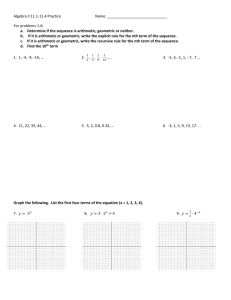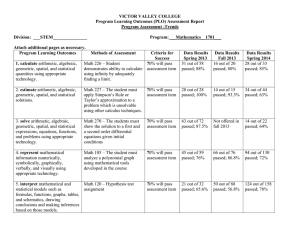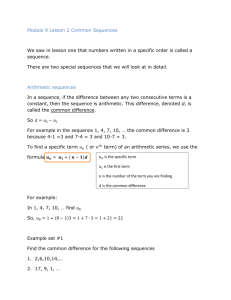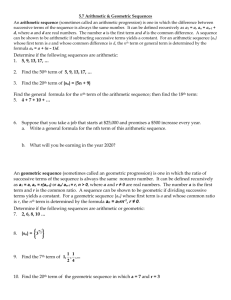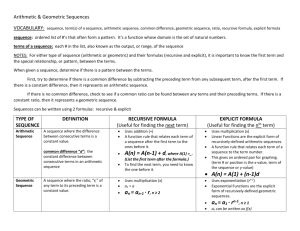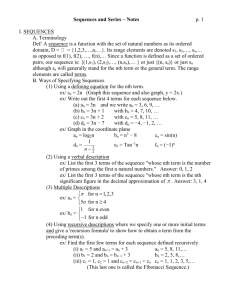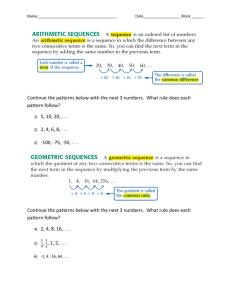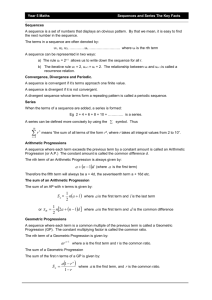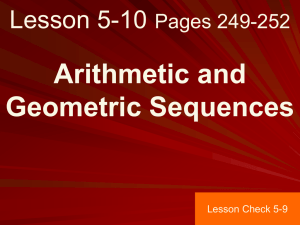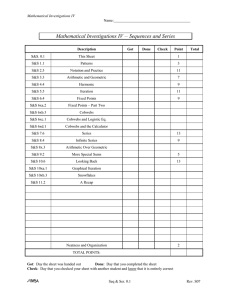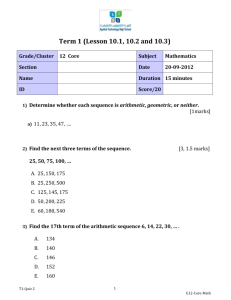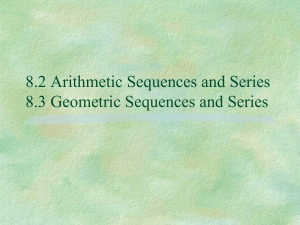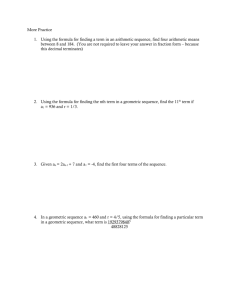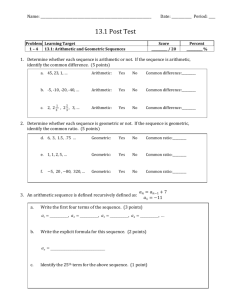Ch. 9 Day 1
advertisement
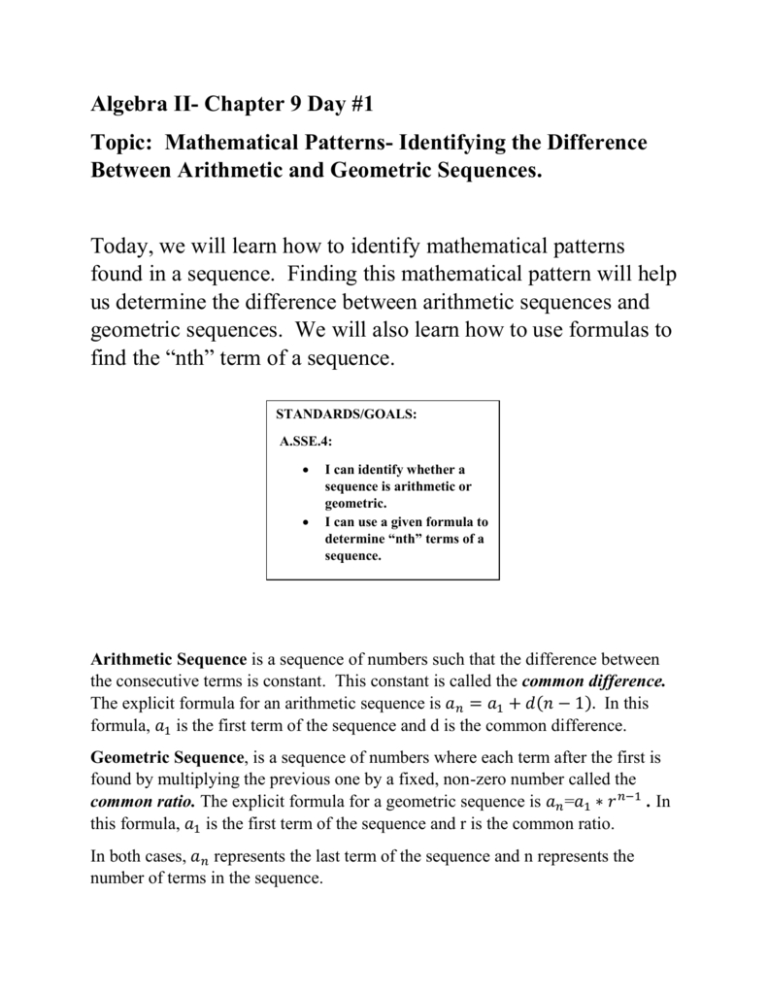
Algebra II- Chapter 9 Day #1 Topic: Mathematical Patterns- Identifying the Difference Between Arithmetic and Geometric Sequences. Today, we will learn how to identify mathematical patterns found in a sequence. Finding this mathematical pattern will help us determine the difference between arithmetic sequences and geometric sequences. We will also learn how to use formulas to find the “nth” term of a sequence. STANDARDS/GOALS: A.SSE.4: I can identify whether a sequence is arithmetic or geometric. I can use a given formula to determine “nth” terms of a sequence. Arithmetic Sequence is a sequence of numbers such that the difference between the consecutive terms is constant. This constant is called the common difference. The explicit formula for an arithmetic sequence is 𝑎𝑛 = 𝑎1 + 𝑑(𝑛 − 1). In this formula, 𝑎1 is the first term of the sequence and d is the common difference. Geometric Sequence, is a sequence of numbers where each term after the first is found by multiplying the previous one by a fixed, non-zero number called the common ratio. The explicit formula for a geometric sequence is 𝑎𝑛 =𝑎1 ∗ 𝑟 𝑛−1 . In this formula, 𝑎1 is the first term of the sequence and r is the common ratio. In both cases, 𝑎𝑛 represents the last term of the sequence and n represents the number of terms in the sequence. Examples: Identify each sequence as arithmetic, geometric, or neither. Explain. 1. 1,6,11,16,…. 2. 125, 62.5, 31.25, 15.625, …. 3. 1, 5, 10, 16,… 4. -5, 5, -5, 5, …… Examples: Determine the “nth” term of each sequence. 𝑎𝑛 = 3 ∗ 2𝑛−1 , 𝑎10 1. 𝑎𝑛 = 3𝑛 − 5 , 𝑎25 2. 3. 𝑎𝑛 = 2𝑛 + 2, 𝑎15 4. 𝑎𝑛 = 4 ∗ ( ) 2 1 𝑛−1 , 𝑎5 Examples: Describe the mathematical pattern and find the next 3 terms in the sequence. 1. 3,6,12,24,48 2. 1, 3, 9, 27, 81 3. 6, 9, 12, 15, 18, 4. 9, 11, 13, 15, Homework – Chapter 9 Day #1 (mathematical patterns) Find the first 6 terms of each sequence and determine whether the sequence is arithmetic or geometric. 1. 2. 𝑎𝑛 = 2 ∗ 2𝑛−1 𝑎𝑛 = −2𝑛 + 1 3 𝑛−1 4. 𝑎𝑛 = 7 ∗ ( ) 4 1 1 𝑛−1 5. 𝑎𝑛 = ( ) ∗ ( ) 2 4 3. 𝑎𝑛 = 8𝑛 + 2 6. 𝑎𝑛 = 3𝑛 + 5 Find 𝑎5, 𝑎50 , 𝑎𝑛𝑑 𝑎100 for the following sequences. 3 𝑛−1 . 𝑎𝑛 = 6 ∗ ( ) 4 8. . 𝑎𝑛 = 5 ∗ (2)𝑛−1 9. 𝑎𝑛 = −2𝑛 + 1 10. 𝑎𝑛 = −5𝑛 − 11 7.





